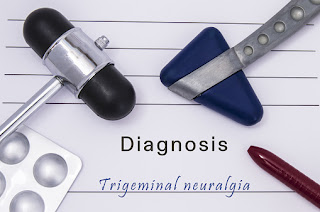Things You Need To Know About Trigeminal Neuralgia
The trigeminal nerve is one of 12 pairs of nerves that are attached to the brain. The nerve has three branches that conduct sensations from the upper, middle, and lower portions of the face, as well as the oral cavity, to the brain. The ophthalmic, or upper, branch supplies sensation to most of the scalp, forehead, and front of the head. The maxillary, or middle, branch stimulates the cheek, upper jaw, top lip, teeth and gums, and to the side of the nose. The mandibular, or lower, branch supplies nerves to the lower jaw, teeth and gums, and bottom lip. More than one nerve branch can be affected by the disorder. Rarely, both sides of the face may be affected at different times in an individual, or even more rarely at the same time.
Trigeminal neuralgia (TN), also called tic douloureux, is a chronic pain condition that affects the trigeminal or 5th cranial nerve, one of the most widely distributed nerves in the head. TN is a form of neuropathic pain, a pain associated with nerve injury or nerve lesion.
The typical or "classic" form of the disorder called Type 1 or TN1 causes extreme, sporadic, sudden burning or shock-like facial pain that lasts anywhere from a few seconds to as long as two minutes per episode. These attacks can occur in quick succession, in volleys lasting as long as two hours.
The “atypical” form of the disorder called Type 2 or TN2, is characterized by constant aching, burning, stabbing pain of somewhat lower intensity than Type 1. Both forms of pain may occur in the same person, sometimes at the same time. The intensity of pain can be physically and mentally incapacitating.
Causes
The exact cause of trigeminal neuralgia is not known, but it's often thought to be caused by compression of the trigeminal nerve, or by another medical condition that affects this nerve. The trigeminal nerve – also called the fifth cranial nerve – provides sensation to the face. You have one on each side.
Diagnosis
As the pain caused by trigeminal neuralgia is often felt in the jaw, teeth or gums, many people with the condition visit a dentist before going to a GP. The dentist will ask you about your symptoms and give you a dental X-ray to help them investigate your facial pain. They'll look for common causes of facial pain, such as a dental infection or cracked tooth.
Trigeminal neuralgia is often diagnosed by a dentist, but if you have seen a dentist and they could not find an obvious cause of your pain, you should visit a GP.
Treatments
A number of treatments can offer some relief from the pain caused by trigeminal neuralgia. Identifying triggers and avoiding them can also help.
Most people with trigeminal neuralgia will be prescribed medicine to help control their pain, although surgery may be considered for the longer term in cases where medicine is ineffective or causes too many side effects.
Trigeminal neuralgia occurs most often in people over age 50, although it can occur at any age, including infancy. The possibility of TN being caused by multiple sclerosis increases when it occurs in young adults. The incidence of new cases is approximately 12 per 100,000 people per year; the disorder is more common in women than in men.




Comments
Post a Comment